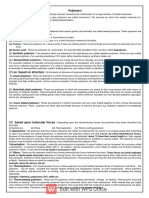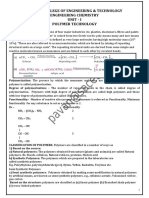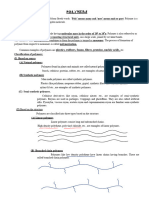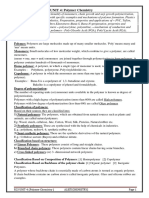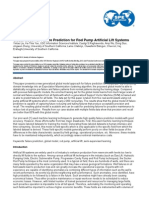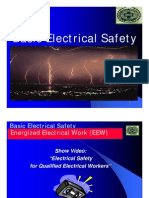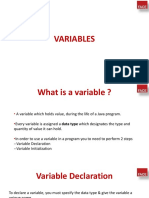NEET UG Chemistry Polymer
NEET UG Chemistry Polymer
Uploaded by
Veer SinghCopyright:
Available Formats
NEET UG Chemistry Polymer
NEET UG Chemistry Polymer
Uploaded by
Veer SinghOriginal Description:
Copyright
Available Formats
Share this document
Did you find this document useful?
Is this content inappropriate?
Copyright:
Available Formats
NEET UG Chemistry Polymer
NEET UG Chemistry Polymer
Uploaded by
Veer SinghCopyright:
Available Formats
Downloaded from www.studiestoday.
com
Unit-25 - POLYMER
IMPORTANT POINTS
§ INTRODUCTION
Polymer : Polymer (poly = many ; meros = parts) : is defined a material which is made by linking
together a large number of small recurring units called monomers. For example, polythene
(–CH2 – CH2 –)n is formed by linking together a large number of ethene (C2H4) molecules.
· Difference between Polymer and Macromolecule. Both polymer and macromolecules are
very big molecules. In a polymer there must be repeating units. But in a macromolecule, the
repeating unit may or may not be present. For example, polyethene containing the repeating unit –
CH2 – CH2 - , is regararded as both a polymer and a macromolecule. But chlorophyll having
formula C55H72O5N4Mg does not have any repeating unit and hence it is known as a macromolecule
but not a polymer.
§ CIASSIFICATION OF POLYMERS
(i) Cassification Based on Source
Natural and Synthetic polymers. The polymers found in nature are known as natural polymers
which control the life process in plants and animals and known as biopolymers, e.g., starch,
cellulose, proteins and nucleic acids. The polymers which are made in the laboratories are
known as synthetic polymers e.g., polythene, nylon, dacron etc.
Semi-synthetic polymers. Semi synthetic polymers are chemically modifiend naturally occurring
polymers. e.g., semi synthetic cellulose diacetate fibers are obtained by acetylation of nautural
celllose whith acetic anhydride in persence of sulphuric acid. An explosive cellulose nitrate
obtained obtained on nitration of cellulose is another example of semi-synthetic polymer Vulcanised
rubber used for making rubber tyres is also a semi-synthetic polymer.
(ii) Classification based on Polymerisation reaction
· Polymerisation. I is the union of two or more of smaller molecules of similar or different type with
or without elimination of a small molecule like water, HCl etc., resulting in the formation of a new
C – C bond.
· The number of repeating units (n) which link together to forma molecule is known as the degree of
polymerisation.
(iii) Classification Based on Mode of Polymerisation
· (a) Chain growth and step growth polymers
· Chain growth polymers. These polymers are formed by successive addition of monomer units to
the growing chain having a reaction intermediate (free radical, carbocation or carbanions) at one end
of the chain. Chain growth polymers are formed by a process which involves chain reactions and
the process is called chain gorwth polymerisation.
· Step growth polymers. These polymers are formed through a series of independent steps (reactions).
Each step involves the condensation (bond fromation) between two bifunctional units (monomers)
leading to the formation of a dimer, trimer, tetramer etc. Since the polymer is formed in a stepwise
manner, the process is called step growth polymerisation.
208
Downloaded from www.studiestoday.com
Downloaded from www.studiestoday.com
· Some important differences between chain growht and step growth polymerisaion are given
below :
Sr. Chain growth polymerisation Step growth polymerisation
No.
(i) Addution polymerisation. Condensation polymerisation.
(ii) Monomers add to growing chain. Monomers add in steps to from dimers, timers.
(iii) Takes place through chain reactions Takes place through condensation reaction
in the presence of initiators.
(iv) Fast reaction Slow reaction.
(b) Homopolymer and copolymer
· Homopolyme. If a polymer is made up of identical monomers, it is a called a homopolymer (......-
M-M-M-M.......). For example, polythene, polyvinyl chloride and neoprene.
· Copolymers. If a polymer is made of monomers of different chemical structures, it is caled a
copolymer (...... –M1 – M2 – M1 – M2 – .......). For example Buna-S, butyl rubber and nitrile
rubber.
· Copolymerisation is the polymerisation of two or more different monomer species resulting in high
molecular mass compounds called copolymerisation.
(c) Addition and condensation polymers
· Addition Polymerisation. In this process, the simple monomers are joined together without loss of
molecules like H2O, NH3, etc. Polythene is one example.
· Condensation Polymerisation. In this process, the simple monomers are combined together whith
the loss of simple molecules like H2O, NH3, etc., e.g., nylon.
· Some important differences between Additon and Condensation polymers are given below :
Sr. Addition polymers Condensation polymers
No.
1. Formed by addition reaction. Formed by condensation process with elimination
of small molecule like H2O.
2. Mol. mass is whole number multiple Mol. Mass is not whole number multiple of
of Monomer. the monomer units.
3. Generally involve one monomer Unit Involve more than one monomer unit.
4. Monomers are unsaturated molecules. Monomer units must have two active functional groups.
5. They are generally chain growth They are generally step growth polymers.
polymers.
(iv) Classification Based on Structure
· Linear Polymers. In these polymers there are straight chains of polymer molecules. For example,
nylon and polyester. Linear polymers possess high melting points and high density.
· Branched Chain Polymers. In these polymers there are braches along the chains of polymer
molecules. For example, amylopectin. Branched chain polymers possess low melting point and low
density.
· Cross Linked polymers. In these polymers the linear chains are joinded together by a suitable
cross link and as a result a three dimentional network structure is formed. For example, polystyrene
– butadiene polymer and urea formaldehyde polymer. The cross linking the mechanical strength also
increases.
209
Downloaded from www.studiestoday.com
Downloaded from www.studiestoday.com
· (v) Cassification Based on Molecular Forces.
· Elastomers are polymers which possess elastic properties in excess of 300 percent. The elastic
property arises from the fact that in a elastomer the monomer units are nct linked in a straight chain
but are arranged in the form of a coil and hence it can be stretched like a spring. When the
deforming stress is released, the chains go back to their original coiled state. For example, natural
rubber, styrene butadiene rubber. Elastomers are cross linked to some extent. However, extensive
cross-linking reduces the elastic property.
· Fibres are polymers in which the chains are held by intermolecular forces e.g., hydrogen bonding
or dipole-dipole interactions. For example, nylon and polyacrylonitrile.
· Thermosetting polymers are polymers which harden irreversibly on application of sufficient heat.
For example bakelite, urea-formaldehyde and melamine-formaldehyde.
· Thermoplastic are polymers which soften on heating and harden on cooling reversibly. For example,
polyvinyl chloride, polythene, teflon and polystyrene.
· Plastics possess plasticity but no elasticity but rubbers possess elasticity and no plasticity.
Plasticity is the property to get deformed on application of force and elasticity is the property to
regain the original shape when the deforming force is removed.
· Some important differences between thermosetting and thermoplastic polymers are given
below :
Sr. Addition polymers Condensation polymers
No.
(1) Formed by condensation Formed by addition polymerisation
polymerisation.
(2) Once hardened, they cannot be Soften on heating and harden on cooling reversibly.
remelted.
On prolonged heating they are charred.
(3) Cannot be reshaped and reused on Can be softened, reshaped and reused.
heating (retain their structure and shape).
(4) Possess three dimensional network Possess linear structure with negligble cross links
structure containing cross links.
(5) These are strong, hard and more brittle. These polymers are weak, soft and less brittle
(6) These polymers can be reclaimed
(7) These polymers cannot be reclaimed. These polymers are soluble in certain orgnic
These are insoluble in common orgnic solvents
solvents.
§ PROPERTIES OF POLYMRE SUBSTANCE
The properties of polymer substances depend upon (i) the structure of the macro molecules contained
in them and (ii) Their avenger molecular mass.
Larger the number of molecules with higher molecular mass contained in it, the greater will be its
density, melting point, hardness. Smaller the number of molecules with lower molecular mass contained
in it, lower will be its density, melting point, hardness etc.
The properties with high degree of polymerisation called high degree polymers (HDP) and the
polymers with low degree of polymerisation are called low degree polymers (LDP). Hard and
210
Downloaded from www.studiestoday.com
Downloaded from www.studiestoday.com
durable materials are made from high degree polymers while lower degree polymers are used to
obtain soft and cheaper materials.
Modification in properties of polymer substances
The properties of the polymer substances can be modified to make them more useful by adding
certain substances to them. For example ;
(i) Inorganic substance like TiO2, BaSO4, CaCO3, SiO2, are added to the polymers to abrasion.
These additives are called fillers.
(ii) Organic substances like tricresyl phosphate, glyeryl phthalate, tertiary butyl phthalate, oleic acid
are added to some polymers to introduce softness. These additives are called plasticizers.
(iii) Organic substances like phenol, cresol, and quinol and carbon black are added to check the
effect of sun light on the polymers and to avoid their decomposition. There additives are called.
antiocidants.
Characteristics of polymer substances
(i) They are light in weight and many types of material can be made out of them.
(ii) They are not affected by atmosphere and moisture unlike wood, metal, leather, cotton clothes.
(iii) They are insulators and possess heat resisting property.
(iv) They are no affected by the germs and most of the chemicals.
(v) Their properties can be easily modified to meet the requirement.
(vi) Their raw materials are easily and cheaply available.
§ GENRAL METHODS OF POLYMERISATION
They are obtained either by addition polymerisation or by condensation polymerisation.
(i) Addition polymerisation. Addition polymerisation involves the combination of a large number
of monomers of one or two types having one or more double bonds. Through chemical bond
formation this type of polymerisation is carried out by the formation of reactive intermediates
such as free radical or carbocation/carbanion with monomers like ethene, propene, styrene, 1,
3-butadiene, isobutylene, vinyl chloride, vinyl nitrile etc.
When a large number of two types of different monomers carrying double bonds add on
alternatively with each other, the reaction is called copolymerisation. Styrene butadiene rubber
alternatively with each other, the reaction is called copolymerisation. Styrene butadiene rubber
(SBR) obtained from styrene and butadiene monomers is copolymer.
(a) Free redical addition polymerisation. Various types of unsturated compounds such as alkeness
or dienes and their derivatives undergo polymerisation via free radical reactive intermediates.
Free redical generated by primary initiator like tertiary butyl peroxide at proper temperature
and pressure. The free radical joins the double bond of monomer ethene forming a new free
radical. This new free radical joins many other molecules one by one forming everytime bigger
and bigger and bigger chain type new free radical. Finally depending upon the reaction conditions,
two bigger long chain type of free radicals join each other to form a polymer molecule.
211
Downloaded from www.studiestoday.com
Downloaded from www.studiestoday.com
M.C.Q.
(1) A high molecular weight molecule built from a large number of simple molecules is called a
(A) Monomer (B) Isomer (C) Polymer (D) Tautomer.
(2) A high molicular wieht molicule which does not contain repeating structural units is called a
(A) Polymer (B) Macromolecule (C) Both (A) and (B) (D) None of the above
(3) The simple molecules from which a polymer is made are called
(A) Monomers (B) Metamers (C) Rotamers (D) Eantiomers.
(4) Which of the following is not a biopolymer ?
(A) Proteins (B) Nucleic (C) Cellulose (D) Neoprene.
(5) What is not true about polymers ?
(A) Polymers do not carry any charge (B) Polymers hgave hig viscosity
(C) Polymers scatter light (D) Polymers have low molecular weights.
(6) On the bases of the mode of their formation the polymers can be classified
(A) as addition polymers only (B) as condensation polymers only
(C) as copolymers (D) Both as addition and condensation polymers
(7) Natural rubber is a polymer of
(A) Butadiene (B) Ethyne (C) Styrene (D) Isoprene
(8) Terylene is a condensation polymer of ethylene glycol and
(A) Benzoic acid (B) Phthalic acid (C) Sakucylic acid (D) Terephthalic acid.
(9) Which one of the following is not an example of chain growth polymer ?
(A) Neopreme (B) Buna-S (C) PMMA (D) Glyptal.
(10) Which of the following is a synthetic polymer ?
(A) Starch (B) Silk (C) Protein (D) Polystyrene.
(11) Homopolymers are made from
(A) Only one type of monomers (B) Two different of monomers
(C) Three different types of monomers (D) Several different types of monomers.
(12) Amongst the following, a homopolymer is
(A) PMMA (B) Bakelite (C) Glyptal (D) Dacron
(13) Which of the following is a copolymer.
(A) Buna-S (B) PAN (C) Polythene (D) PTFE
(14) Which of the following is a linear polymer ?
(A) Nylon (B) Bakelite
(C) Alkyd resin (D) Melamine-formaldehyde polymer.
(15) Amongst the following, the branched chain polymer is
(A) PVC (B) Polyester (C) Low density polythene (D) Nylon-66
(16) A copolymer of acrylonitrile and 1, 3-butadine is called.
(A) Buna-N (B) Polystyrene (C) Neoprene (D) Buna-S.
(17) Which of the following is wrong ?
(A) PMMA is called plexiglass (B) PTFE is called teflon
(C) SBR is natural rubber (D) LDPE is called low density polythene.
212
Downloaded from www.studiestoday.com
Downloaded from www.studiestoday.com
(18) Which of the following statement/s is /are correct?
(A) Vinyon is a copolymer of vinyl chloride and vinyl acetae
(B) Saran is a copolymer of vinyl chloride and vinydiene chloride
(C) Butyl rubber in a copolymer of isobutylidene and isoprene
(D) All are correct
(19) Mark the correct statement about thiokol rubber
(A) It is a synthetic polysulphide rubber
(B) It is obtained by condensation of ethylene chloride with sodium tetrasulphide
(C) It is resistant to oils and abrasion
(D) All are correct
(20) Which of the following is an addition ( chain growth) polymer?
(A) Nylon-66 (B) Polyester (C) PVC (D) Glyptal
(21) Which of the following is not an addition polymer?
(A)Polystyrene (B) PVC (C) Polypropylene (D) Nylon
(21) An example of addition copolymer is
(A) Polythene (B) Butyl rubber (C) Neoprene (D) Natural rubber
(22) Which of the following is an addition homopolymer?
(A) ploythene (B) Teflon (C) PVC (D) All the three above
(23) Which of the following sets cotain only addition homopolymer?
(A) Polythenem natural rubber, cellulose (B) Starch, nylon, polyester
(C) Teflon, bakelite, orlon (D) Necoprene, PVC, polythene
(24) Which of the following is not a condensation (step growth) polymer?
(A) Melamine-formaldehyde resin (B) Bakelite
(C) Polythene (D) Polyester
(25) An example of a condensation homopolymer is
(A) Bakelite (B) Melamine-formaldehyde resin
(C) Alkyd resin (D) perlon or Nylon-6
(26) A polymer formed by coordination polymerization is
(A) Low density polythene (B) High density polythene
(C) Nylon-6 (D) Dacron
(27) Low density polythene is prepared by
(A) Free radical polymerization (B) Cationic polymerization
(C) Anionic polymerization (D) Zeigler-Natta polymerization
(28) The best eay to prepare polyisobutylene is
(A) Coordination polymerization (B) Free radical polymerization
(C) Cationic Polymerization (D) Anionic polymerization
(29) Natural rubber is a polymer of
(A) Ethylene (B) Vibyl chloride (C) Phenol (D) Isoprene
(30) Isoprene is
(A) 1,3-butadiene (B) 2-methyl-1,3-butadiene
(C) 2-mithoxy-1,3-butadiene (D) 2-chloro-1,3-butadiene
213
Downloaded from www.studiestoday.com
Downloaded from www.studiestoday.com
(31) Natural rubber is
(A) Polyvinyl chloride (B) cis-Polyisoprene (C) trans- Polyisoprene (D) Polychloropene
(32) Gutta percha is
(A) trans- Polyisoprene (B) a synthetic polymer
(C) a very hard material (D) All statement are correct
(33) Natural silk is a
(A) Polypeptide (B) polysaccharide (C) polychloropene (D) polyacrylonitrile
(34) artificial silk is a
(A) Polypeptide (B) polysaccharide (C) polythene (D) Polyvinyl Chloride
(35) Which of the followin is not a polyamide?
(A) Wool (B) Leather (C) Nylon (D) Natural rubber
(36) Among the following polymer, the strongest intermolecular forces of attraction are present in
(A) Elastomers (B) Fibres
(C) Thermoplastics (D) Thermosetting polymers
(37) Among the following the weakest interparticle forces of attraction present in
(A) Thermosetting polymers (B) Thermoplastics polymers
(C) Fibers (D) Elastomers
(38) Thermoplastics are
(A) Linear polymers
(B) Soften or melt on heating
(C) Molten polymer can be moulded in desired shape
(D) All the correct
(39) Which of the following is not a thermosetting polymer?
(A) Alkyd resin (B) Bakelite (C) Melmac (D) SBR
(40) Which of the following can be remelted time and again without producing any change
(A) Thermosetting polymers (B) Thermoplastics polymers
(C) Bakelite (D) Melamine-formaldehyde polymer
(41) The tensile strength, elasticity and resistance to abrasion can be increased by a process called
........
(A) Diazotisation (B) Vulcanization (C) Isomerization (D) Polymerization
(42) The process of vulcanization was introduced by
(A) Charles’ goodyear (B) Kolbe (C) Wohler (D) Zeigler
(43) Vulcanized rubber resists ........
(A) Wear and tear due to friction (B) Cryogenic temperature
(C) High temperature (D) Action of acids
(44) The polymer obtained by condensation of sevacic acid and hexamethylenediamine is called .........
(A) Nylon-66 (B) Nylon-6 (C) Nylon-610 (D) Decron
(45) The liner chains in nylon are held together by
(A) H-bonds (B) Covalent (C) Ionic bonds (D) van der waal’s forces
214
Downloaded from www.studiestoday.com
Downloaded from www.studiestoday.com
(46) Caprolactam needed for manufacture of nylon-6 is obtained by beckmann rearrangement of
...........
(A) Benzophenone oxime (B) Acetophenone oxime
(C) Cyclohexanone oxime (D) Cyclopentanone oxime
(47) The repeating structural unit in neoprene is
(A) Chloroprene (B) Chloropicrin
(C) Chloroethene (D) Chlorotrifluoroethylene
(48) Chloroprene is obtained by addition of HCL to
(A) Acetylene (B) Vinylacetylene (C) Divinylacetylene (D) Phenylacetylene
(49) To make PVC a flexible plastic, the additive used is called
(A) Filler (B) Antionxidant (C) Stabilizer (D) Plasticizer
(50) A polymer of prop-2-enenitrile is called
(A) Saran (B) Orlon (C) Dacron (D) Teflon
(51) Starch is the condenstion polymer of
(A) α-Glucose (B) β-Glucose (C) α-Fructose (D) β-Fructose
(52) Repeating disaccharide unit of starch is
(A) Lactose (B) Sucrose (C) Maltose (D) Cellobiose
(53) The repeating disaccharide unit of cellulose is
(A) cellobiose (B) Maltose (C) Lactose (D) Sucrose
(54) A polymer which has bette light transmission properties tha even glass is
(A) Perspex (B) Bakelite (C) Buna-S (D) Poly(ethyl acrylate)
(55) The polymer used in manufacture of electrical goods such as switches ,plugs etc. is
(A) Polythene (B) Bakelite
(C) Melamine-formaldehyde resin (D) Neoprene
(56) The polymer used for coating electrical wires, cables etc. is
(A) Natural rubber (B) Neoprene (C) Nitrile rubber (D) PVC
(57) A polymer which is commonly used as a packing material
(A) Polythene (B) Polypropylene (C) PVC (D) Bakelite
(58) A synthetic rubber which is resistant to the action of oils, gasoline and other solvents is
(A) Buna-S (B) Polyisoprene (C) Neoprene (D) Polystyrene
(59) The abbreviation Pdi refers to
(A) Name of the polumer (B) Poly dispersity index
(C) Planck’s disposal index (D) Polydiagonal index
(60) PDI for natural polymers is generally close to
(A) Zero (B) 100 (C) 1 (D) 10
(61) Nylon-66 is made by using
(A) Phenol (B) Benzaldehyde (C) Adipic acid (D) Succinic acid
(62) The process involving heating of rubber with sulphur is called
(A) Galvanisation (B) Vulcanization (C) Bessemerisatiom (D) Sulphonation
215
Downloaded from www.studiestoday.com
Downloaded from www.studiestoday.com
(63) Terylene is made by polymerization of terephthalic acid with
(A) Ethylene glycol (B) Phenol (C) Ethanol (D) Catechol
(64) Teflon, styron and neoprene are all
(A) copolymers (B) Condensation polymers
(C) homopolymers (D) monomers
(65) Interparticle forces present in Nylon-66 are
(A) van der waals (B) Hydrogen bonding
(C) Dipole-dipole interactions (D) None of the above
(66) Soft drinks and baby feeding bottles are generally made up of
(A) polyester (B) polyurethane (C) Polyurea (D) Polyamide
(67) Polymer used in bullet proof glass is
(A) PMMA (B) Lexan (C) Nomex (D) Kevlar
(68) Which of the following is a constituent of nylon?
(A) Adipic acid (B) Styrene (C) Teflon (D) None of these
(69) Caprolactam polymerises to give
(A) Terylene (B) Teflon (C) Glyptal (D) Nylon-6
(70) Which of the following is a polyamide molecule?
(A) Terylene (B) Rayon (C) Nylon-6 (D) Polystrene
(71) A condensation polymer among the following is
(A) Dacron (B) PVC (C) Polystyrene (D) Teflon
(72) The catayst used for the polymerrization of olefins is
(A) Ziegler-natta catalyst (B) Wilkinson’s catalyst
(C) Pd- catalyst (D) Zeise’s salt complex
(73) Cellulose acetate is a
(A) natural polymer (B) semisynthetic polymer
(C) synthetic polymer (D) plasticier
(74) Teflon is a polymer of
(A) tetrafluoroethylene (B) tetraiodoethylene (C) tetrabromoethylene (D) tetrachloroethylene
(75) Natural rubber is which type of polymer?
(A) condensation of polymer (B) addition polymer
(C) co-ordination polymer (D) none of these
(78) Which is a protein?
(A) Nylon (B) Rayon (C) Natural silk (D) Terylene
(79) Natural rubber is a polymer of
(A) Isoprene (B) Styrene (C) Ethylene (D) Butadiene
(80) Which of the following is not an example of addition polymer?
(A) Polystyrene (B) Polyethylene (C) Polypropylene (D) Dacron
(81) Buna-S is obtained by the copolymerisation of butadiene and
(A) chloroprene (B) styrene (C) acrylonitrile (D) adipic acid
216
Downloaded from www.studiestoday.com
Downloaded from www.studiestoday.com
(82) Melmac is a polymer of melamine and
(A) glycerol (B) formaldehyde (C) cyclohexne (D) caprolactum
(83) Which of the following is a condensarion polymer?
(A) Polystyrene (B) PAN
(C) Neprene (D) Polyethleneglycol terephthalate
(84) Which of the following is a natural polymer?
(A) Bakelite (B) Cellulose (C) PVC (D) Nylon
(85) The monomer unit of PVC is
(A) Vinyl chloride (B) ethylene (C) chloroprene (D) acrylonitrile
(86) Which one is a synthetic polymer?
(A) Starch (B) Silk (C) Protein (D) Neoprene
(87) Natural rubber is
(A) polyisoprene (B) polyvinyl chloride (C) polychloroprene (D) polyfluoroethylene
(88) Which interparticle forces between linear chains in Nylon-66 are
(A) H-bonds (B) covalent bonds (C) Dacron (D) Glyptal
(89) Which of the following is common example of fibres?
(A) Bakelite (B) Buna-S (C) Nylon-66 (D) PVC
(90) The weakest interparticle forces are present in
(A) Thermosettin polymers (B) Thermoplastic polymers
(C) Fibres (D) elastomers
(91) Which of the following is an example of co-polymer?
(A) Buna-s (B) PAN (C) Polythene (D) PTFE
(92) Which of the following represents the example of homopolymer?
(A) PMMA (B) Bakelite (C) Glyptal (D) Nylon-66
(93) Polyacrylonitrile is an example of
(A) addition polymer (B) condensation polymer
(C) natural polymer (D) none of the above
(94) Caprolactum is used to prepare which of the following polymer
(A) Nylon-66 (B) Malamine (C) Nylon-6 (D) PMMA
(95) Artificial silk is
(A) nylon-6 (B) rayon (C) nylon-66 (D) none of these
(96) Natural silk is a
(A) polypeptide (B) polyacrylate (C) polyester (D) polysaccharide
(97) The process of vulcanization of rubber was introduced by
(A) Zeigler (B) MRF (C) Charles goodyear (D) Wohler
(98) A polymer of prop-2-2enenitrile is called
(A) Saran (B) Orlon (C) Dacron (D) Tetron
(99) copolymer is
(A) Nylon-6 (B) Nylon-66 (C) PMMA (D) Dacron
217
Downloaded from www.studiestoday.com
Downloaded from www.studiestoday.com
(100) Ebonite is
(A) Natural rubber (B) Synthetic rubber
(C) Higly vulcanized rubber (D) polypropene
ANSWER KEY
1 C 26 B 51 A 76 B
2 B 27 A 52 C 77 D
3 A 28 C 53 A 78 C
4 D 29 D 54 A 79 A
5 D 30 B 55 B 80 D
6 D 31 D 56 D 81 B
7 D 32 D 57 A 82 B
8 D 33 A 58 C 83 D
9 D 34 B 59 B 84 B
10 D 35 D 60 C 85 A
11 A 36 B 61 C 86 D
12 A 37 D 62 B 87 A
13 A 38 D 63 A 88 A
14 A 39 D 64 C 89 C
15 C 40 B 65 B 90 D
16 A 41 B 66 D 91 A
17 C 42 A 67 B 92 A
18 D 43 A 68 A 93 A
19 D 44 C 69 D 94 A
20 C 45 A 70 C 95 B
21 D 46 C 71 A 96 A
22 D 47 A 72 A 97 C
23 D 48 B 73 B 98 B
24 C 49 D 74 A 99 C
25 D 50 B 75 B 100 C
218
Downloaded from www.studiestoday.com
You might also like
- P17500 P33000 PDFDocument14 pagesP17500 P33000 PDFAdrian GonzalezNo ratings yet
- Classification of PolymersDocument8 pagesClassification of Polymerscmmalba100% (1)
- 4 Training Plan Epas1Document2 pages4 Training Plan Epas1JoseMariano ArnalNo ratings yet
- Adobe Conservation HandbookDocument216 pagesAdobe Conservation HandbookDavid Noü100% (2)
- Unit-25 - POLYMER: Important PointsDocument11 pagesUnit-25 - POLYMER: Important PointsVijaychandar VijayNo ratings yet
- CH 25 PDFDocument19 pagesCH 25 PDFkrishnaNo ratings yet
- Unit 5 Polymer and Organometallic Compounds-1Document32 pagesUnit 5 Polymer and Organometallic Compounds-1Akash DobriyalNo ratings yet
- PolymerDocument9 pagesPolymersatyamc710No ratings yet
- EC polymerDocument55 pagesEC polymersuraj718549No ratings yet
- Polymers: ChemistryDocument29 pagesPolymers: ChemistryPrantik SealNo ratings yet
- POLYMERDocument15 pagesPOLYMERALEXIS KIMBERLY DE GUZMANNo ratings yet
- Chemistry Notes For Class 12 Chapter 15 PolymersDocument17 pagesChemistry Notes For Class 12 Chapter 15 PolymersAsifNo ratings yet
- Classification of PolymersDocument30 pagesClassification of PolymersbilalNo ratings yet
- Polymer ScienceDocument28 pagesPolymer SciencezenithcheeliNo ratings yet
- Chemistry Notes For Class 12 Chapter 15 Polymers: PolymerisationDocument17 pagesChemistry Notes For Class 12 Chapter 15 Polymers: Polymerisationharsh vardhanNo ratings yet
- UnitV - Functional MaterialsDocument24 pagesUnitV - Functional MaterialsAppu MadanNo ratings yet
- SA Unit 5 POLYMER AND ORGANOMETALLIC COMPOUNDSDocument34 pagesSA Unit 5 POLYMER AND ORGANOMETALLIC COMPOUNDSguptaneha8700003783100% (1)
- Lecture 02 (31.05.2023)Document4 pagesLecture 02 (31.05.2023)skbhayday1No ratings yet
- 4 PolymersDocument31 pages4 Polymersshadabjashim2004No ratings yet
- Polymers NEWDocument70 pagesPolymers NEWHisham TaherNo ratings yet
- Basics of Polymers PDFDocument12 pagesBasics of Polymers PDFShubham BhoiNo ratings yet
- Chemistry Formula Chapter15 PolymersDocument18 pagesChemistry Formula Chapter15 PolymersAbhishek SinghNo ratings yet
- Polymer TechnologyDocument16 pagesPolymer Technologykhubaib rahmanNo ratings yet
- PolymersDocument9 pagesPolymersChhavi SharmaNo ratings yet
- ST - Ann'S College of Engineering & Technology Engineering Chemistry Unit - I Polymer TechnologyDocument18 pagesST - Ann'S College of Engineering & Technology Engineering Chemistry Unit - I Polymer TechnologyMaddu PavanNo ratings yet
- Polymers PDFDocument14 pagesPolymers PDFsiddarth amaravathiNo ratings yet
- SCY1616Document50 pagesSCY1616MohsinAliNo ratings yet
- Classification of PolymerDocument23 pagesClassification of PolymerChaudhary Asheesh Rahal100% (1)
- Polymers: Chemistry ProjectDocument20 pagesPolymers: Chemistry ProjectGKJK2530No ratings yet
- Synthetic & Natural Polymers Module-6-3Document9 pagesSynthetic & Natural Polymers Module-6-3Raju SinghNo ratings yet
- DR - Dhoke-Unit 3-Lecture 1-Speciality Polymers-Biodegradable PolymersDocument25 pagesDR - Dhoke-Unit 3-Lecture 1-Speciality Polymers-Biodegradable PolymersLadliNo ratings yet
- 17 Polymers Full Reddy SirDocument15 pages17 Polymers Full Reddy Sirshaunak4320No ratings yet
- Engineering Chemistry Polymers and Polymerization: BSC 102: Course Name: Topic Course CodeDocument21 pagesEngineering Chemistry Polymers and Polymerization: BSC 102: Course Name: Topic Course CodeAshok KumarNo ratings yet
- Polymers!Document23 pagesPolymers!ALEXIS KIMBERLY DE GUZMANNo ratings yet
- Group 3 Polymer IndustryDocument31 pagesGroup 3 Polymer IndustryShakila QamarNo ratings yet
- CY101-Engineering Materials and Applications NotesDocument66 pagesCY101-Engineering Materials and Applications NotesEemesh NarayanaNo ratings yet
- Lech 206Document14 pagesLech 206viswanath622008No ratings yet
- UNIT I POLYMER CHEMISTRY (Misc.)Document40 pagesUNIT I POLYMER CHEMISTRY (Misc.)sankee3737vNo ratings yet
- Module 4 PolymersDocument84 pagesModule 4 PolymersSai MedaNo ratings yet
- R 23 Unit-4 Polymer ChemistryDocument23 pagesR 23 Unit-4 Polymer ChemistryjdevisantoshkumarNo ratings yet
- Unit 5 Materials Chemistry - Tc-Bio-Cve-Che 2023Document75 pagesUnit 5 Materials Chemistry - Tc-Bio-Cve-Che 2023peyalneeranNo ratings yet
- 12CHEM18 Polymers 1Document42 pages12CHEM18 Polymers 1Arjun PasrichaNo ratings yet
- Materials Science Polymers 1) Types of Polymer (A) PlasticDocument8 pagesMaterials Science Polymers 1) Types of Polymer (A) PlasticMeldy Grace Mantala ComandanteNo ratings yet
- Polymer Science Module 2023Document90 pagesPolymer Science Module 2023Tesfaye MekonenNo ratings yet
- PolymersDocument12 pagesPolymersNaman SharmaNo ratings yet
- NCERT Class 12 Chemistry PolymersDocument14 pagesNCERT Class 12 Chemistry Polymerssohithkontham5No ratings yet
- Unit 1-Polymer Chemistry ACETR23Document22 pagesUnit 1-Polymer Chemistry ACETR23scs150831100% (1)
- Polymer Science and Technology 2Document93 pagesPolymer Science and Technology 2xnzrjp55tsNo ratings yet
- Unit-1 Introduction To PolymersDocument40 pagesUnit-1 Introduction To Polymerssantosh chikkamathNo ratings yet
- Ploy MerDocument17 pagesPloy MerAnonymous fdyyOfNo ratings yet
- Subtopic 6.1: Polymers: MaterialsDocument32 pagesSubtopic 6.1: Polymers: MaterialschiggsNo ratings yet
- R20 Applied Chemistry - UNIT-1 (Ref-2) - NewDocument21 pagesR20 Applied Chemistry - UNIT-1 (Ref-2) - NewGopl KuppaNo ratings yet
- POLYMERSDocument36 pagesPOLYMERSJimboy Macalinao BlazaNo ratings yet
- Faculty of Resource Science and Technology Department of ChemistryDocument17 pagesFaculty of Resource Science and Technology Department of ChemistrySharifah Zulaikha BenYahyaNo ratings yet
- Lecture 9 Polymers-With AnnotationsDocument21 pagesLecture 9 Polymers-With AnnotationsNiña Viaña BinayNo ratings yet
- UNIT I Polymer TechnologyDocument30 pagesUNIT I Polymer TechnologyAdi KothaNo ratings yet
- Polymer: Types of PolymersDocument6 pagesPolymer: Types of PolymersSarah SheikhNo ratings yet
- Chap - 06 Polimer KimyasiDocument19 pagesChap - 06 Polimer Kimyasiozguncrl1No ratings yet
- Porous PolymersFrom EverandPorous PolymersMichael S. SilversteinNo ratings yet
- New Frontiers in Sciences, Engineering and the Arts: Volume Iii-A: the Chemistry of Initiation of Ringed, Ringed-Forming and Polymeric Monomers/CompoundsFrom EverandNew Frontiers in Sciences, Engineering and the Arts: Volume Iii-A: the Chemistry of Initiation of Ringed, Ringed-Forming and Polymeric Monomers/CompoundsNo ratings yet
- Hyperbranched Polymers: Synthesis, Properties, and ApplicationsFrom EverandHyperbranched Polymers: Synthesis, Properties, and ApplicationsDeyue YanNo ratings yet
- Polyoxymethylene Handbook: Structure, Properties, Applications and their NanocompositesFrom EverandPolyoxymethylene Handbook: Structure, Properties, Applications and their NanocompositesNo ratings yet
- Unconventional Machining ProcessDocument39 pagesUnconventional Machining Processuday bavandla100% (1)
- Anant Damodar Raje: - Born: - 1954: - 1957-1960Document43 pagesAnant Damodar Raje: - Born: - 1954: - 1957-1960prasannaNo ratings yet
- PowerFlex 527 AC DriveDocument2 pagesPowerFlex 527 AC Drivehammad.scitraNo ratings yet
- SPE-165374-Global Model For Failure Prediction For Rod Pump Artificial Lift SystemsDocument10 pagesSPE-165374-Global Model For Failure Prediction For Rod Pump Artificial Lift SystemsBrenda Rojas CardozoNo ratings yet
- Accredited Construction Details Quinn Building ProductsDocument5 pagesAccredited Construction Details Quinn Building ProductsShofi SyarifahNo ratings yet
- VyvoPay TutorialDocument32 pagesVyvoPay TutorialHoan LeNo ratings yet
- IRFBG30Document8 pagesIRFBG30Adilson LucaNo ratings yet
- Basic Electrical Safety-LOTODocument94 pagesBasic Electrical Safety-LOTOChristian Mercado100% (1)
- Info - Tech. Model PaperDocument8 pagesInfo - Tech. Model PaperAnaryanNo ratings yet
- Installation Guide: Devan Water TanksDocument12 pagesInstallation Guide: Devan Water TanksEdwardhutaurukNo ratings yet
- Nfpa 72 2010 Update PDFDocument17 pagesNfpa 72 2010 Update PDFSmitha Nair100% (1)
- A) Data CleaningDocument7 pagesA) Data CleaningAziz Ur RehmanNo ratings yet
- Product DatasheetDocument1 pageProduct Datasheetأبو أميرNo ratings yet
- A CMOS Bandgap Reference Circuit With Sub-1V OperationDocument5 pagesA CMOS Bandgap Reference Circuit With Sub-1V Operationbooky_mookyNo ratings yet
- MTDocument459 pagesMTjar_275% (4)
- GU EK60 SpesifikasiDocument2 pagesGU EK60 SpesifikasiAndryTiraskaNo ratings yet
- Problem Set #2 - ChE 124 - Summer 2018Document3 pagesProblem Set #2 - ChE 124 - Summer 2018SkambalahardarNo ratings yet
- !python Scripting For Spatial Data Processing PDFDocument194 pages!python Scripting For Spatial Data Processing PDFSiAgam DevinfoNo ratings yet
- Question 1Document9 pagesQuestion 1Romelyn BaptistaNo ratings yet
- PreviewpdfDocument35 pagesPreviewpdfyazidNo ratings yet
- VariablesDocument39 pagesVariablesRam Prasad ReddyNo ratings yet
- Elastomeric Sealant MsdsDocument7 pagesElastomeric Sealant MsdsNIKKA MANAHANNo ratings yet
- Chap16-Analog Integrated CircuitsDocument55 pagesChap16-Analog Integrated CircuitsMạnh Cường TrầnNo ratings yet
- New Microsoft Word DocumentDocument2 pagesNew Microsoft Word DocumentArun RatheeNo ratings yet
- Cell ManufacturingDocument76 pagesCell Manufacturingdevmecz2696No ratings yet
- Aerodynamic Data Generation TechniquesDocument21 pagesAerodynamic Data Generation TechniquesThiago BoaventuraNo ratings yet
- Today Today: Kobelco Welding Consumables Kobelco Welding ConsumablesDocument3 pagesToday Today: Kobelco Welding Consumables Kobelco Welding ConsumablesMuhammad Iqbal TamiyahNo ratings yet







